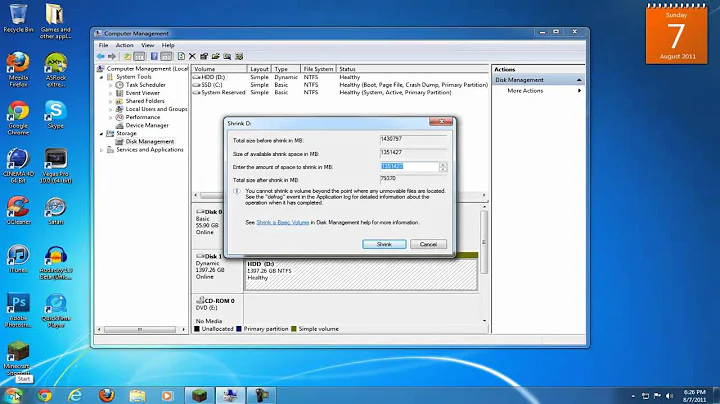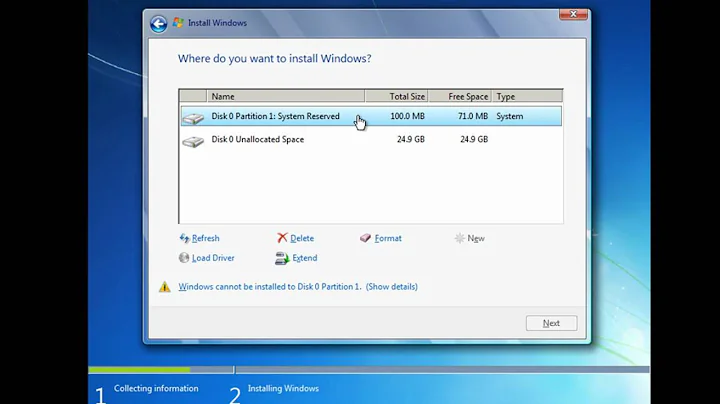Migrating Windows 7 to new hard drive/partition
Solution 1
I found that cloning Windows partition to a different disk fails all too often, sometimes because of the changed drive letters, sometimes because of botched boot records, etc. The following two solutions helped me many times, but they are not 100% foolproof either:
Use "Repair" function of Windows 7 boot disk. It often manages to repair many boot problems. Change the boot drive back to C: using these instructions. Unfortunately, this does not work in 100% of cases.
Alternative approach: From within Windows (booted into your old partition), create a mirror of your boot/system partition as your new partition. After the mirror sync completes, break the mirror and keep the new partition only. This method requires converting your disks to dynamic disks, which may cause problems if you need to access these disks from Linux or other non-Windows OSes.
Solution 2
You can install linux alongside windows. It will take like 2 Gb and grub will detect windows and it will show up in boot menu. You can make it default after 1 sec delay. As an added bonus you will have spare system to boot into in case of emergency. I always do that.
Related videos on Youtube
Admin
Updated on September 18, 2022Comments
-
 Admin over 1 year
Admin over 1 yearSo, I'be managed to migrate my Windows 7 data over from /dev/sdb3 to a new partition on /dev/sdc1 using ntfsclone. I managed to resize the volume size to match the new partition size. I also used ms-sys to add a Windows 7 MBR to /dev/sdc.
Windows won't boot. It will if I have /dev/sdb3 still enabled, but the ultimate goal here is to remove that partition. Besides, under this condition my new drive is only seen as D and not as the boot drive. I've googled all over.... Help?
The ntfsclone command was ntfsclone -O /dev/sdc1 /dev/sdb3
-
JdeBP over 12 yearsShow people what your partitions are, so that people don't keep giving you random guesses based upon almost zero information from you. Show the output of
diskpart'slist partitioncommand for both discs, and the output of itslist discandlist volumecommands; or show the output ofgdisk -l.
-
-
 Admin over 12 yearsI didn't see any additional partition in fdisk, so I guess not?
Admin over 12 yearsI didn't see any additional partition in fdisk, so I guess not? -
Dave M over 12 yearsPossible. Some installs do not create this.




